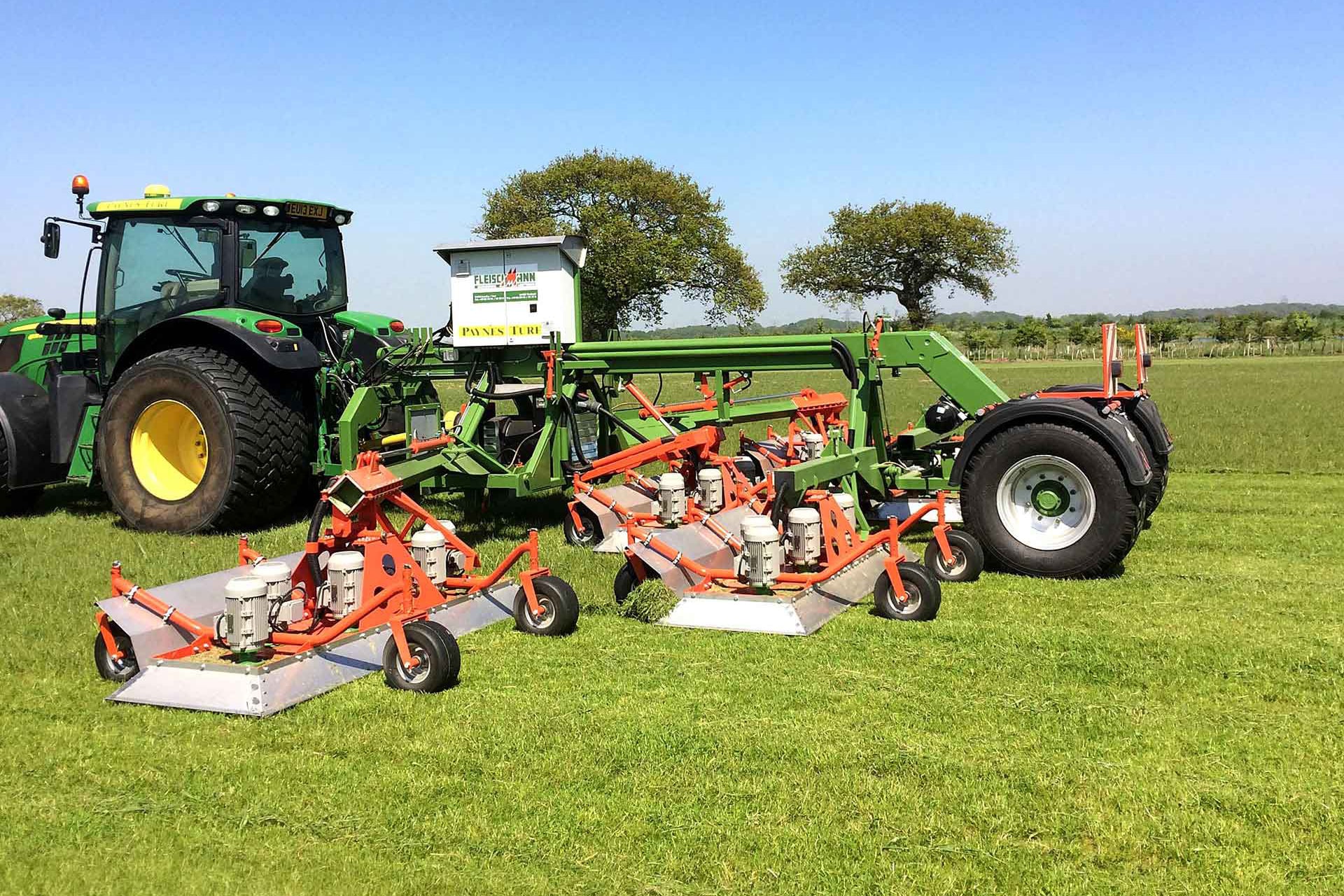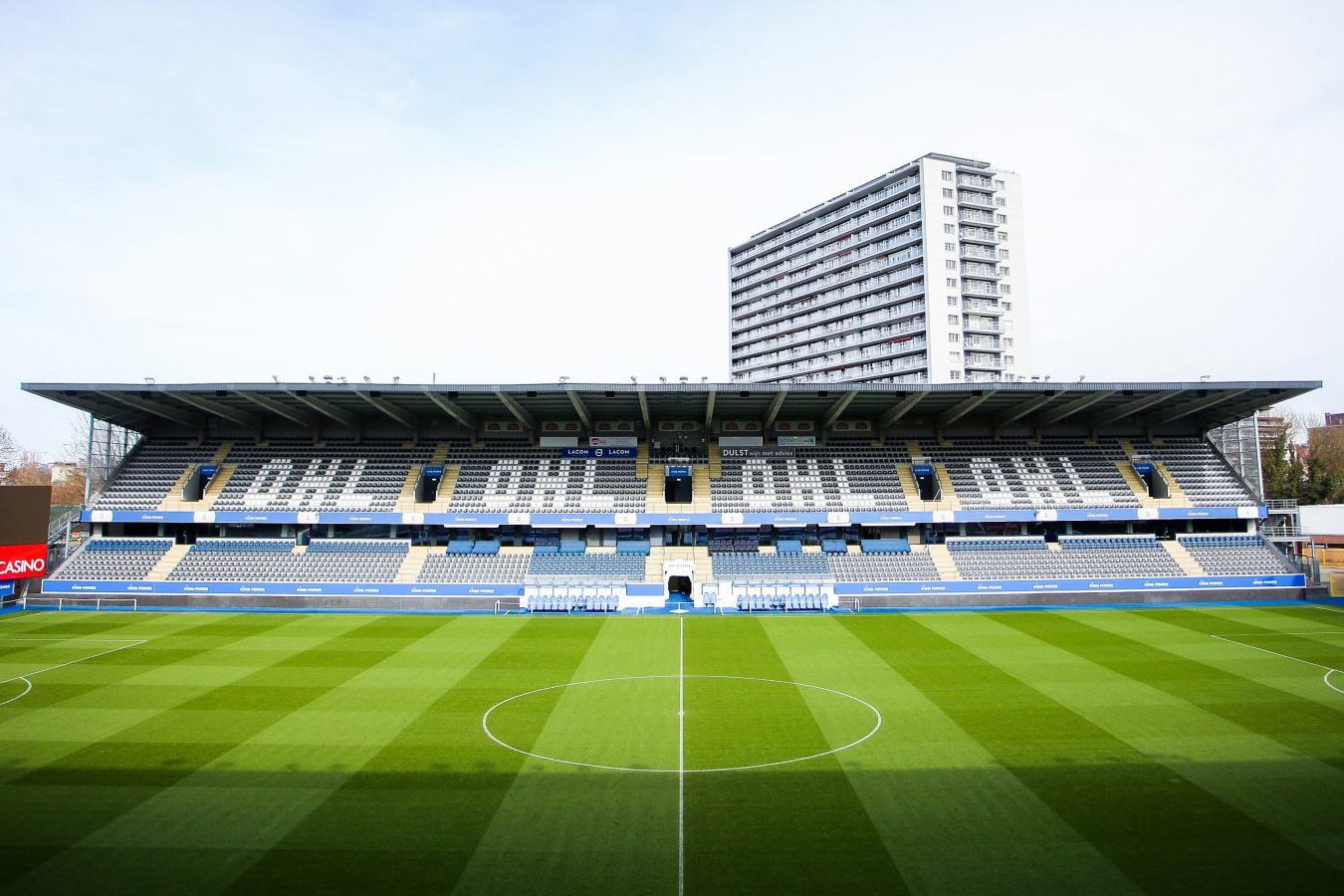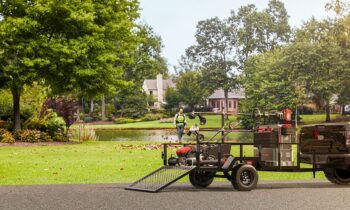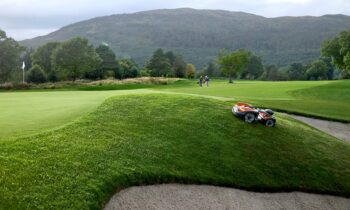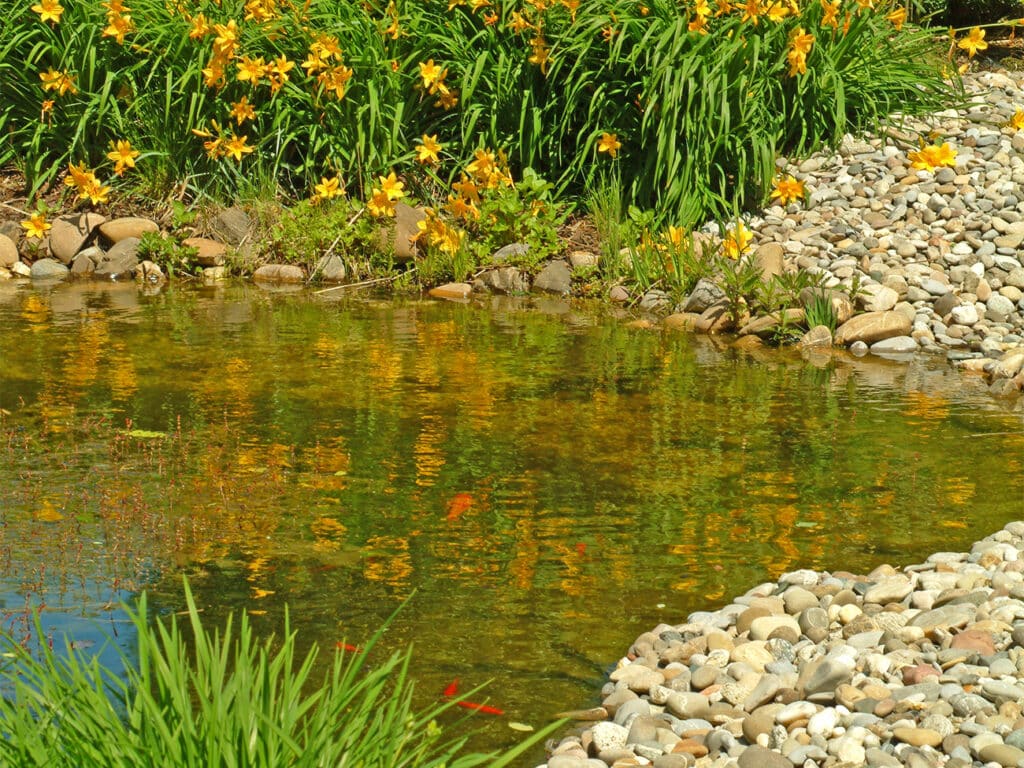
Discover utility, beauty and fun of water features in the garden
A major player in ponds and water storage, Distri Pond is evolving with the market situation. For the last fifteen years, the company has been surfing high on the wave of swimming ponds. This with honest and clear concepts, based on proven principles of waterproofing and water treatment.
Lockdowns, periods of drought, energy shortages and other threats ... changed and are changing the way we look at gardens and water.
There may (should) be more nature in the garden
It is clear from all the surveys around gardens lately: the majority of garden owners want more greenery and more biodiversity in their own yards. This is partly due to the 'boredom' that occurred during periods of lockdown and partly to a greater awareness of the role that gardens can play as biotopes. A rigid 'empty' garden with a large terrace and flat lawn is nowadays viewed rather negatively by a majority of the population. One gets bored of it too quickly and biologically it is often no more than a 'semi-desert'.
This is now changing. Rolling shapes and room for flowering plants are now more sought after, even in the tiniest of gardens. Good for butterflies and birds, much better for hedgehogs and other critters.
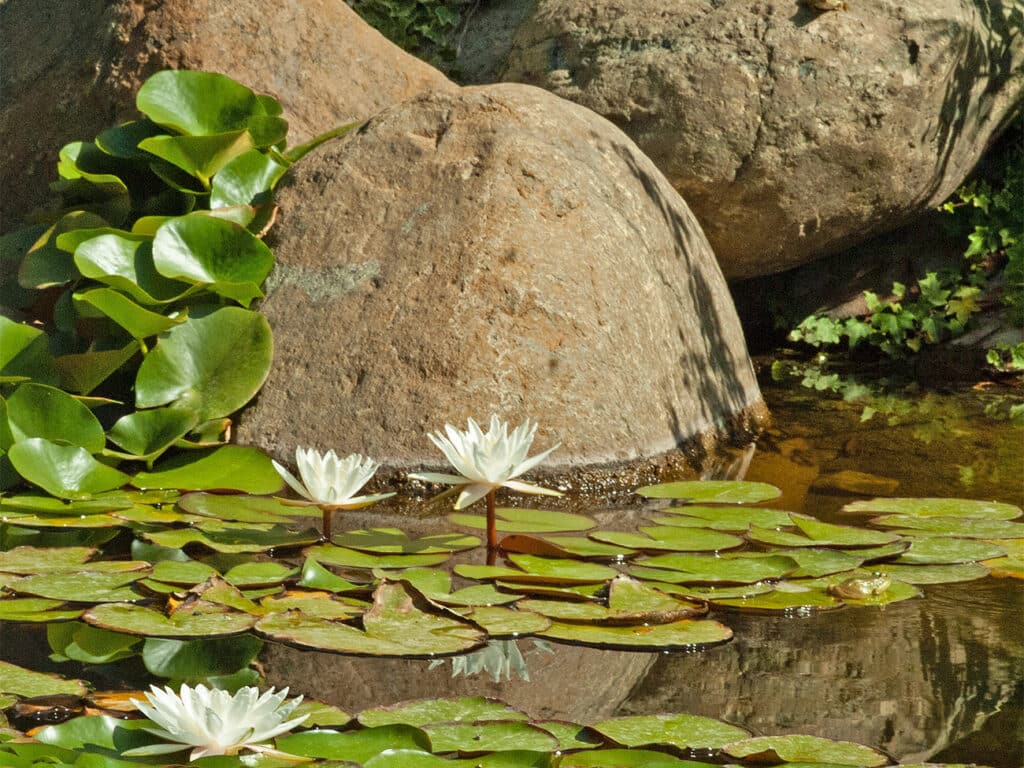
Garden ponds and garden climate
Along with trees, ponds temper the local climate. They provide a cooling effect during otherwise too hot summer days. Natural air conditioning for the garden, in other words. And this is not just subjective, it can also be measured objectively. It makes several degrees Celsius difference during hot days. On hot days it is up to 6° cooler above a water feature. Ideally, wind can blow over or along the water before it passes by the seating area. The combination with a tree that draws air over, through or along a water feature gives supply of cooled air. A fountain - back from the past, now fashionable again - provides additional cooling by forming water droplets.
Garden ponds and water loss
But pond water evaporates and water is becoming scarcer and more expensive. This creates a form of doubt about the impact of ponds. Are ponds a waste of water? Not necessarily. One pond is not the other. A pond in the sun, empty without plants and exposed to dry winds loses a fair amount of water. But evaporation can be reduced quite a bit by covering the surface with floating (leafy) plants. This is what usually happens in nature. Nature wants to cover, soil but also water.
With falling water levels, we see many natural ponds completely covered with duckweed plants. Almost no more evaporation and the life hiding underneath remains protected from drying out.
A swimming pond with floating plants is less obvious. For additionally heated swimming ponds (from 24°C), the use of a liquid cover is an elegant solution. The product HeatCover, developed in Belgium, reduces evaporation by 50%.
Ponds should not always be full
Much depends on design and edging and planting. Water features intended for amphibians and other native aquatic life can certainly handle varying water levels. This is often the case in nature as well. Many aquatic plants are adapted to this and can grow in (reasonably) deep water as well as in drier conditions.
From my own experience, ponds with waterproofing that are sufficiently deep do not dry out completely, even if they are never refilled.
As an experiment, I deliberately did not refill some of my ponds during several years. Their depth (0.8m meters and 1.0 meters) allowed them to retain enough water to get aquatic life through the driest periods. They got through the dry summers of 2019 and 2020 without a problem. In he wet year of 2021, they went overflowing. During the drought of 2022, they were again extra low, but there was still enough water left for livestock. These ponds are somewhat sheltered but in full sun and richly planted. Refilling with water is done only by the clouds hanging above. The maximum fluctuation in water level is 60 cm.
If we can connect the rainwater pipe from a gazebo or garage to the pond, for example, the replenishment will obviously happen faster and the water level will never really get that low.
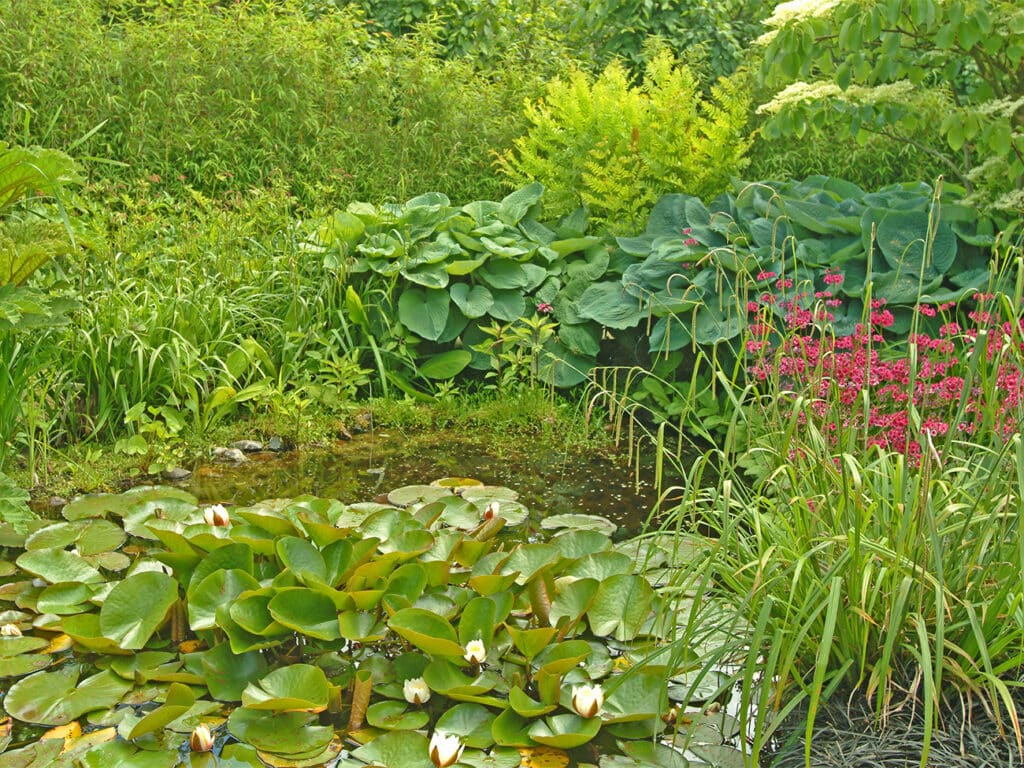
Then we make a wadi
Wadi is actually an Arabic word and has several definitions, from valley over mostly dry riverbed in the desert to pond with varying water levels. In Dutch, it is also an acronym for Water Afvoer Drainage Infiltratie. So in the Netherlands and Belgium, wadi usually refers to a buffering and infiltration facility filled by rainwater. In a "modern wadi," streets and roofs are disconnected from the sewer system. The rainwater that falls on these paved surfaces is discharged via a rainwater sewer to a wadi, where it can infiltrate into the soil, or be slowed down to drain into surface water. In this way, clean rainwater is prevented from going to the sewage treatment plant, and in the meantime, groundwater is truly replenished.
The "pond part" of the wadi serves as an additional volume and provides local cleansing of the water through the action of microorganisms and plants.
In new construction or thorough renovation, it is best not to let rainwater go to waste. The roofing consists of environmentally friendly inert EPDM, the underground rainwater tank is large and is not too deep in the ground. The water from the overflow of the tank runs into a pond. The pond overflows into a sinkhole.
In an existing situation, one installs an above-ground rain barrel or other form of water storage. This overflows into a pond. The pond overflows into an infiltration zone.
The infiltration zone/sink pit are best constructed in a location somewhat away from the buildings. It is located on the private property. In case of lack of space, the area under and/or around the pond can also be used for infiltration. Then it is important to prevent the foil from pushing upwards by weighting it over the entire surface with rolling stones or gravel.
We make, if possible, the pond deep enough (at least 80, better 100 cm), that makes it more stable and safer for aquatic life. It is best to provide at least one gently sloping side. Rolling boulders provide the transition from water to land, so that the waterproofing is not or hardly visible even at low water levels. The right choice of plants ensures that it remains attractive even during drier periods.
This is how we ensure that the balance tilts toward capturing more water, keeping more water, and wasting less water.
More focus on small ponds
Very likely there will be a renewed interest in small water features in the next few years. Crisis means more being at home and thus more attention to home gardens. People realize more and more that ponds are biologically valuable and serve as stepping stones for endangered aquatic life, stepping stones between natural areas. And they liven up even the smallest gardens. Building a pond is not difficult and does not have to be expensive.
A garden pond can be made "climate proof" by respecting some simple basics. Lightly shelter the pond from the wind, but this will be the case in most private gardens. The excavation is done stepwise, creating different levels. For example, a level of 20 cm deep, a step of 50 cm deep and an area of 100 cm deep.
Such a stepped pond has many advantages: one quickly reaches a great depth, the pond is easily accessible and layers of sediment spread nicely over the entire surface. The deepest part then has a smaller surface area, so the extremes of cold and drought can be accommodated.
The pond edges are hidden from view by rolling boulders, stones, tree stumps and plantings. A gently sloping beach is also possible. Animals can easily get in and out of the water. Some shade over the afternoon is nice. This can be done, for example, with a sleeping tree, which unfolds its leaves in the sun. The pond gets some extra free water from the roof of the gazebo or carport in rainy weather. A water lily of small or medium size counteracts water evaporation in summer, while in winter the water surface is visible.
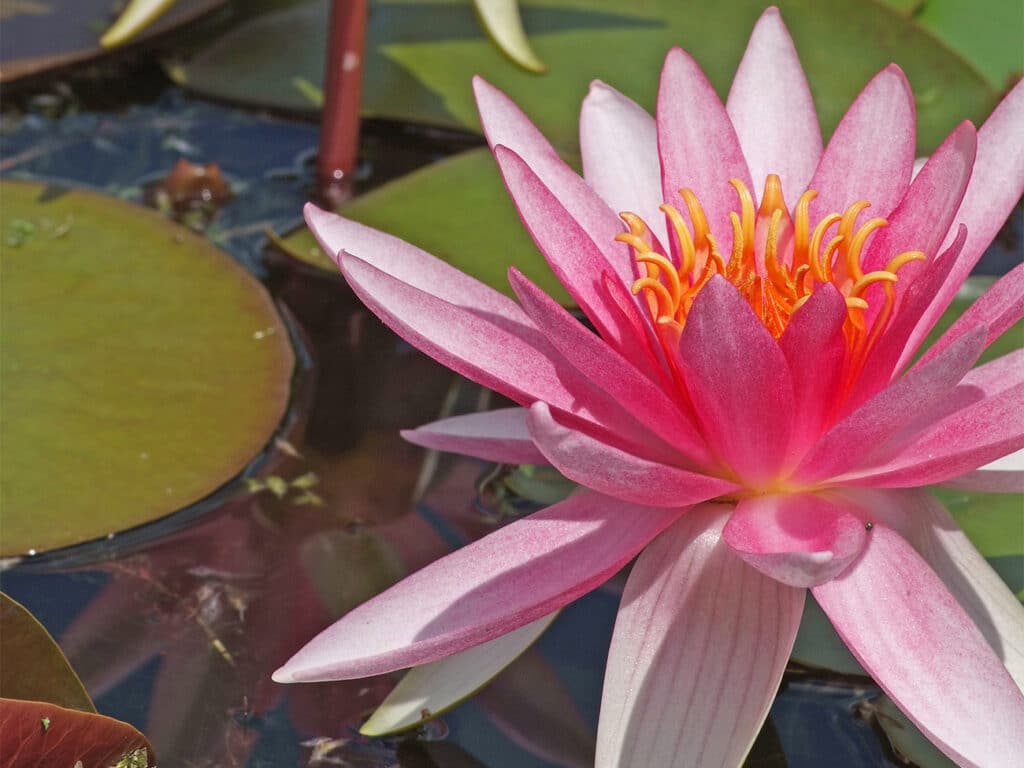
Distri Pond shows the way
At the Green trade show, Distri Pond is showing, among other things, a retail display of pond equipment for construction and maintenance of small ponds in particular. This is a range of products that sells itself, compact and attractively presented. To save space in the store, we present foil on small rolls and foil pre-packaged, the so-called "prepacks.
And of course there is also a focus on water storage, including above-ground storage, very suitable for rainwater but also for other uses.
DISTRI POND - Booth 1350
www.distripond.com
